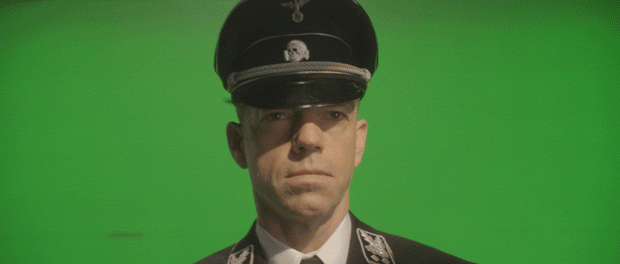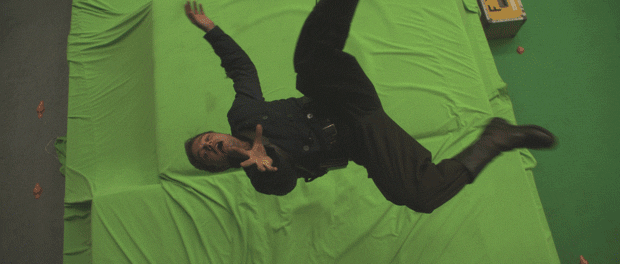Find out how TRIXTER tackles complex CG and stereoscopic 3-D feature work with a little help from a “tasty” motion tracking program called mocha.
With its recent stereo and visual effects work on Captain America, X-Men: First Class, and Journey 2, German production company TRIXTER Film has traveled far and expanded wide from its humble origins as a boutique character animation studio. Founded in 1998, the company now has facilities in Munich, Berlin, Toronto and Los Angeles, moving deftly between live action and animated features, in mono or 3-D stereo. The company has nurtured a talented group of artists to handle projects involving anything from more traditional model making and cel animation to key framed CG creatures, motion capture driven performances, matte paintings and other visual effects work. The profile of its recent projects would suggest the company has joined the ranks of animation/vfx studios with global operations trusted for tent-pole feature film work.
To handle such a diverse project roster and compete with other large studios, TRIXTER has built a state-of-the-art production pipeline, handling CG work primarily with Maya and RenderMan and compositing with Nuke. Additionally, proprietary production tools, built in house, compliment the pipeline, which supports full stereo 3-D workflow, enabling the company to produce sophisticated, high-quality work on difficult shots in a timely and cost-effective manner. The company has also built a stereoscopic pipeline with its own set of production tools in order to accommodate complex stereo 3-D projects. They also still run a full ANIMO suite for traditional 2D cel animation.
Central to recent visual effects and stereo projects has been the use of mocha, from Imagineer Systems, a planar tracking and rotoscoping software program that aids shot tracking and cuts down on manual keyframing for roto artists.
According to TRIXTER compositing TD Michael Habenicht, the studio used mocha extensively on every recent project, ranging from stereo conversion on Green Lantern to visual effects work on X-Men: First Class, Captain America: The First Avenger and Journey 2: Mysterious Island. “ We use Nuke for all the compositing here at TRIXTER. mocha integrates really well as it is only a matter of exporting to the clipboard and then pasting directly into Nuke. Also the new features since Nuke 6.2 was released that allows us to export only the keyframes for shapes, instead of having to “bake” every frame, really improves the workflow and speeds things up. So much can be done in mocha that, once we export to Nuke, there’s little back and forth for final adjustments. That’s another huge time saver.”
At some point in the process, nearly every shot was tracked with mocha. Michael pointed out that, “mocha touches everything, especially if a shot requires some cleanup, replacement or roto. It provides excellent results in no time. Simply load your clip, draw the shape, track it, and then paste it into Nuke. Our artists, some of whom had never used it before, learned it very fast and were instantly impressed by what can be achieved. The ability to add a grid to the tracking gives us very good, fast feedback and perspective about the quality. Also the magnifier that shows the keyframe before and after is an essential aid to good consistent roto.”
On X-Men, TRIXTER was used to replace Mystique's eyes. The sequence posed a number of challenges, least of which was to finish the work on time and on budget. First, Michael’s team had to track the eyes and the face to get the general movement. mocha's robust algorithm meant the tracking wasn’t easily distracted by small movements and variations in the pattern that differ from the overall movement. As Michael explained, “Blinks of the eyes were rarely a problem like they used to be when you tried to track a single feature in another software program. The first round of tracking helped to roto the eyes and place the new ones. The second round tackled the movement of the pupil. Reproducing all subtle movements of the original performance was key to a successful shot. This way we could preserve all the character's emotions even with her new set of eyes.”
Michael went on to say that mocha has changed the way TRIXTER tackles complex visual effects and stereo 3-D conversion projects. “On Journey 2, we had to do a lot of cleanup. An animal that was used on set for filming had to be removed here and there so that a new CG creature could be inserted. mocha was a big help by providing reliable tracks for patches and roto,” he explained. “mocha is an amazing tool that keeps getting better. We’re looking forward to new developments - features we know will benefit us even more, like a python api. This new feature will help us integrate pipelines and workflows even more effectively.”
--
Dan Sarto is publisher of VFXWorld.
Dan Sarto is Publisher and Editor-in-Chief of Animation World Network.











